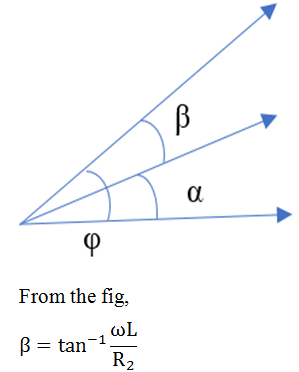This set of Electrical Measurements & Measuring Instruments Multiple Choice Questions & Answers (MCQs) focuses on “Errors in Dynamometer Wattmeter”.
1. Pressure coil of a wattmeter ________
a) has capacitance and inductance
b) has inductance and resistance
c) has resistance and capacitance
d) has only inductance
View Answer
Explanation: Series resistance R consists of inter turn capacitance. As a result, the pressure coil of the wattmeter consists of capacitance in addition to inductance.
2. What is the effect of capacitance on wattmeter reading?
a) aiding the inductance
b) opposite to that of inductance
c) aiding the capacitance
d) opposite to that of resistance
View Answer
Explanation: For lagging power factor of the load, the wattmeter reading is more. As a result, the wattmeter shows a reading opposite to that of the inductance.
3. Wattmeter reading is not affected by temperature.
a) True
b) False
View Answer
Explanation: Wattmeter reading is affected by change in temperature. Resistance of the pressure coil and the spring stiffness are affected by the changes in temperature. Effects caused by these two effects oppose each other and neutralize.
4. Dynamometer type wattmeter has _________
a) strong magnetic field
b) intermediate magnetic field
c) weak magnetic field
d) no magnetic field
View Answer
Explanation: Dynamometer type wattmeter consists of a weak magnetic field. It is affected by stray magnetic fields. As a result, wattmeters are shielded to offset effects of stray magnetic fields.
5. Wattmeter reading has errors induced by _________
a) resistance
b) self-capacitance
c) self-inductance
d) mutual inductance
View Answer
Explanation: Due to mutual inductance between the current and pressure coil in a wattmeter, errors are introduced. Errors are negligible at power frequencies whereas they have a considerable value at higher frequencies.
6. Current in a pressure coil of the Dynamometer type wattmeter ________
a) lags the applied voltage
b) leads the applied voltage
c) is in phase with the applied voltage
d) there is a phase difference of 90 degrees
View Answer
Explanation: The current through the pressure coil is in phase with the applied voltage in an ideal wattmeter. The pressure coil is assumed to be purely resistive. Practically, the pressure coil has a small inductance L. As a result the current lags the applied voltage by a certain angle.

where, R2 = r2 + R = total resistance of the pressure coil
r2 = resistance of pressure coil
R = series resistance with the pressure coil
I1 = load current.
7. Wattmeters are compensated for errors due to inductance by _________
a) using a series capacitor
b) using a parallel capacitor
c) using a series resistance
d) using a parallel resistance
View Answer
Explanation: Wattmeters are compensated for errors caused by the inductance of pressure coil through the connection of a suitable parallel capacitor with multiplier resistance R.

Fig illustrates that the total impedance of the pressure coil circuit Z2 equals the total resistance of the pressure coil circuit namely R2.
8. Eddy currents are induced in solid metal parts within the thickness of the conductor.
a) True
b) False
View Answer
Explanation: Eddy currents produce their own field. They affect the magnitude and phase of the current flowing through the current coil. This leads to errors. As a result, the wattmeter reads low values for lagging power factors and high values for leading power factors.
9. What is the effect of frequency on the torque of a moving system?
a) torque is half of the frequency
b) torque is twice the frequency
c) torque is thrice the frequency
d) torque is four times the frequency
View Answer
Explanation: In a wattmeter, the torque of the moving system is affected by the frequency. Torque is twice the natural frequency with respect to the supply voltage. As a result of this, pointer in the measurement scale vibrates causing difficulty in reading.
Sanfoundry Global Education & Learning Series – Electrical Measurements.
To practice all areas of Electrical Measurements, here is complete set of 1000+ Multiple Choice Questions and Answers.
If you find a mistake in question / option / answer, kindly take a screenshot and email to [email protected]
